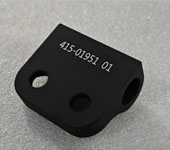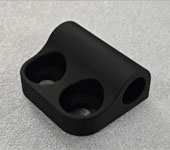
- English
- Español
- Português
- русский
- Français
- 日本語
- Deutsch
- tiếng Việt
- Italiano
- Nederlands
- ภาษาไทย
- Polski
- 한국어
- Svenska
- magyar
- Malay
- বাংলা ভাষার
- Dansk
- Suomi
- हिन्दी
- Pilipino
- Türkçe
- Gaeilge
- العربية
- Indonesia
- Norsk
- تمل
- český
- ελληνικά
- український
- Javanese
- فارسی
- தமிழ்
- తెలుగు
- नेपाली
- Burmese
- български
- ລາວ
- Latine
- Қазақша
- Euskal
- Azərbaycan
- Slovenský jazyk
- Македонски
- Lietuvos
- Eesti Keel
- Română
- Slovenski
- मराठी
- Srpski језик
HY introduces you to the complete die-casting process (Part 2)
2024-01-11
Low pressure casting process
Aluminum rotating shafts are the most typical products of low-pressure die casting. In addition, car wheels are also typical examples of low-pressure die casting. In low-pressure die casting, the mold is always positioned vertically above the molten metal bath, which remains connected by a riser. The heated metal is then pressurized from 20kPa to 100kPa in a chamber, pulling the molten metal upward into the mold.
Vacuum die casting
The vacuum die-casting process is an additional process of two traditional die-casting methods, and is most appropriate for cold chamber die-casting. Before the molten metal enters the mold cavity, air and gases are removed to achieve a vacuum mold cavity. Vacuum die casting minimizes turbulence and gas dust, facilitating post-casting heat treatment processing. The advantages of vacuum die casting are improved mechanical properties, improved surface finish, more stable precision dimensions, reduced cycle time, fewer defects caused by trapped gas, and convenient subsequent heat treatment of parts.


Squeeze casting
Squeeze casting, also known as liquid metal forging, combines the characteristics of casting and forging to manufacture automotive parts and shaft bodies. This diagram shows the sequence of operations of the squeeze casting process, where molten metal is squeezed into the mold while filling the recessed areas of the mold, thereby providing a very dense product at the end of the process. The method is also used to make reinforced metal matrix composites, in which molten aluminum infiltrates the fiber-reinforced structure. Squeeze casting reduces shrinkage and porosity, improves product quality due to the fine grain structure caused by rapid solidification, and produces a smooth surface. The metals most often cast by squeeze casting are: aluminum and magnesium alloys.
Semi-solid metal forming
Semi-solid metal forming, also known as semi-solid forming, semi-solid die casting or paste processing, is a die-casting process that combines the characteristics of casting and forging and uses semi-molten materials. It is commonly used in the manufacture of aluminum alloy parts for aerospace, pressure vessels, military, engine mounts and cylinder blocks, and oil pump filter housings. Semi-solid metal forming can produce complex parts with thin walls, excellent mechanical properties, superior surface finishes, relatively low porosity and tight tolerances. They can also be heat treated. One disadvantage is that the process is highly susceptible to environmental factors such as temperature, so the manufacturing equipment and environment require more control, which results in expensive equipment.
Die casting material
Although it can cast ferrous and non-ferrous materials, not all materials are suitable for die casting, as the process requires heating the material to its melting point and then pressing it into a reusable mold. Therefore, materials such as magnesium, zinc, aluminum, iron, copper, silicon, tin and lead are commonly used in die castings.
Aluminum
Aluminum is widely used in die-casting processes due to its low-cost properties. Die-cast aluminum is lightweight and environmentally friendly, and has good dimensional stability, allowing manufacturers to produce components with thin walls and complex geometries. Aluminum components find many uses in the aerospace, automotive and electronics industries due to their corrosion resistance and thermal/electrical conductivity. Aluminum is alloyed with silicon and copper to avoid shrinking or shattering at high temperatures.
Zinc
Zinc die casting is a versatile production method ideal for products requiring increased strength and ductility, high precision, tight tolerances and excellent thermal properties. The most common examples of zinc die castings are gears and connectors. Zinc may need to be mixed with aluminum to improve the quality of the final product. Zinc die casting is well suited for hot chamber die casting due to the metal's low melting point. Zinc die-cast parts find a variety of uses in consumer electronics and automotive.
Copper
Almost anything made of copper is durable. Additionally, copper has high corrosion resistance. Therefore, it is widely used in the production of components for the plumbing and electrical industries.


Magnesium
Magnesium is the ideal metal for die casting when thin-walled structures and high precision are required. It has a high strength-to-weight ratio and is lightweight, making it widely used in the aerospace industry.
Zinc alloy
Zinc alloys, such as ZA alloy and Zamak alloy, are still very easy to die cast and their reactions are also well suited to the process due to increased strength and castability. Zinc alloys are widely used as decorative and practical alternatives to iron and brass.
Bronze and brass alloys
Bronze and brass alloys can be die cast almost as quickly as zinc alloys. Bronze and brass alloys allow manufacturers to create durable parts with better machinability, especially when lead is included. In addition to being completely accurate internally, brass alloys offer good corrosion resistance, low melting temperatures, low coefficients of friction, relatively high strength due to the aluminum content, and recyclability.
Lead alloy
Lead alloys are used in the manufacture of fire-fighting equipment, decorative metalwork and bearings. This is undoubtedly due to their ability to resist corrosion. They are not recommended for use on goods that come into contact with food.



